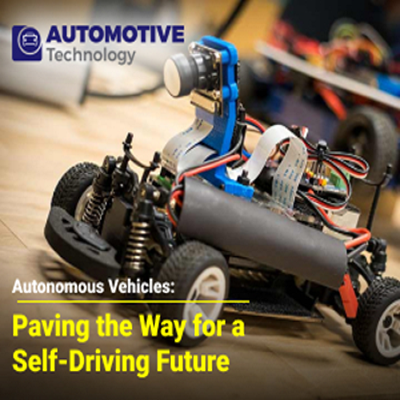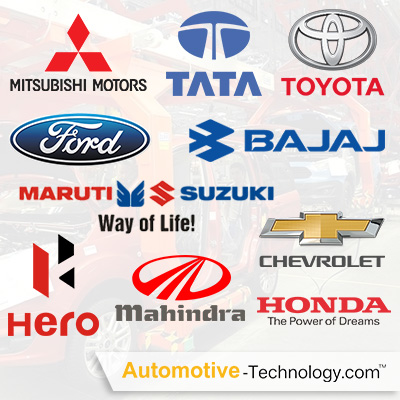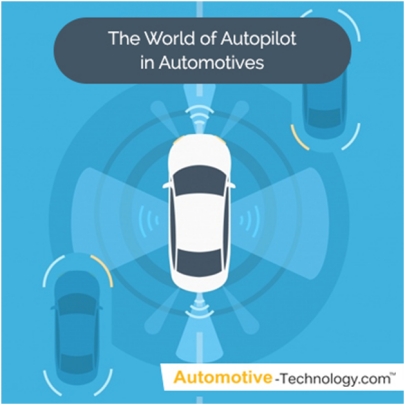Autonomous Vehicles: Paving the Way for a Self-Driving Future

In the not-so-distant future, the roads we know today might look vastly different. Imagine a world where cars navigate without human input, seamlessly weaving through traffic and reaching destinations with unmatched precision. This vision is becoming a reality through the development of autonomous vehicles, leading us on a transformative journey towards a self-driving future.
What are Autonomous Vehicles?
Autonomous vehicles, often referred to as self-driving cars, are equipped with advanced technologies that allow them to operate without direct human control. These vehicles use a blend of sensors, radar, cameras, and sophisticated software algorithms to perceive their surroundings, make informed decisions, and navigate through intricate environments.
The Evolution of Autonomous Driving
The concept of autonomous vehicles has been brewing for decades, with significant milestones paving the way for their development. Starting from early experiments in the 1920s to the introduction of adaptive cruise control in the 1990s, the progression of this technology has been both steady and revolutionary.
In recent times, the rise of AI and ML has significantly advanced research in autonomous vehicles. Major technology companies and automotive firms are dedicating substantial resources to refine this technology, envisioning a future where autonomous vehicles become a familiar presence on our roadways.
Challenges on the Road to Autonomy
Despite the promising advancements, several challenges persist on the road to widespread autonomous vehicle adoption. Safety concerns, regulatory hurdles, ethical dilemmas, and technological limitations all play crucial roles in shaping the future of self-driving cars. Safety for passengers and pedestrians remains a top priority. Autonomous vehicles are expected to operate without accidents, requiring thorough testing and safety measures. Furthermore, addressing legal and ethical concerns regarding liability in case of mishaps is crucial for establishing a secure legal structure for autonomous vehicles.
| Read More: The Rise of Electric Vehicles (EVs) in Commercial Fleets: A Comprehensive Guide for B2B Decision-Makers |
Regulatory bodies worldwide are grappling with the task of formulating comprehensive guidelines to govern the use of autonomous vehicles. These regulations need to strike a delicate balance between fostering innovation and ensuring public safety, often requiring collaboration between policymakers, technology developers, and the public at large.
Navigating Technological Challenges
Technological advancements have been instrumental in pushing the limits of autonomous driving. From sophisticated sensor development to the enhancement of real-time data processing capabilities, continuous innovation is vital to tackle the obstacles confronting autonomous vehicles.
One of the critical areas of focus is the improvement of AI-driven decision-making processes. Equipping vehicles with the ability to adapt to dynamic environments, interpret complex traffic scenarios, and make split-second decisions is crucial for the seamless integration of self-driving cars into our daily lives.
Enhancing communication systems to enable vehicles to interact with each other and with infrastructure is another crucial aspect of the technological development required for autonomous driving. Creating a robust network that facilitates real-time data exchange among vehicles can significantly enhance road safety and optimize traffic flow, leading to a more efficient transportation ecosystem.
The Future of Mobility
Despite the obstacles, the future of autonomous vehicles appears promising, with far-reaching implications for various sectors. Beyond transforming personal transportation, autonomous vehicles have the potential to revolutionize industries such as logistics and public transportation.
The integration of autonomous technology in public transport systems can lead to increased efficiency, reduced congestion, and improved accessibility, especially in urban areas. Additionally, the implementation of autonomous delivery services has the potential to streamline logistics operations, reducing costs and expediting the delivery of goods.
Looking Ahead
As we navigate the intricate terrain of autonomous vehicle development, it is crucial to acknowledge that the journey is as important as the destination. Collaborative efforts from stakeholders across industries, sustained technological advancements, and proactive regulatory measures will be pivotal in shaping the future of autonomous driving.
While challenges persist, the potential benefits of autonomous vehicles cannot be overlooked. From enhanced road safety and reduced congestion to increased accessibility and improved transportation efficiency, the transformative impact of self-driving cars has the power to reshape our world.
In embracing this revolution, we must ensure that technological innovation is guided by a commitment to safety, ethics, and sustainability. By charting a responsible path forward, we can pave the way for a future where autonomous vehicles not only redefine transportation but also contribute to a more connected, efficient, and sustainable global community.
The journey toward autonomous vehicles represents more than just technological advancement; it embodies a fundamental shift in our relationship with transportation. By fostering a deeper understanding of the challenges and opportunities that lie ahead, we can collectively navigate the road to self-driving cars and usher in a new era of mobility that is safer, more efficient, and more inclusive for all.
Embracing the potential of autonomous vehicles also entails considering their environmental impact. With the rise of electric and hybrid autonomous vehicles, the potential to reduce carbon emissions and combat climate change becomes increasingly tangible. By integrating sustainable practices into the development and deployment of self-driving cars, we can contribute to a greener future and foster a more environmentally conscious transportation ecosystem.
Moreover, the societal impacts of autonomous vehicles surpass transportation and environmental factors. The emergence of self-driving technology can reshape mobility for diverse groups, such as people with disabilities and the elderly. By emphasizing accessibility and inclusivity in the development and integration of autonomous vehicles, we can establish a fairer and more empowering transportation environment for all individuals in society.
Conclusion
In conclusion, understanding the multi-dimensional aspects of the autonomous vehicle landscape is critical. Despite significant advancements, the path to a fully autonomous future necessitates ongoing collaboration, innovation, and ethical deliberation. By actively confronting challenges and prudently leveraging the transformative capabilities of autonomous vehicles, we can lay the groundwork for a future where transportation is safer, more efficient, and more inclusive for all.



